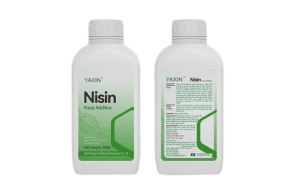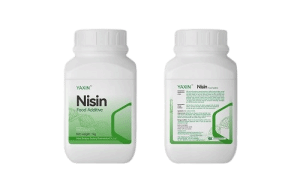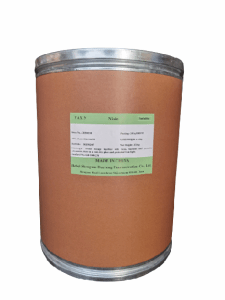Tel:+8618231198596

News
 CONTACT
CONTACT
 CONTACT
CONTACT
- Linkman:Linda Yao
- Tel: +8618231198596
- Email:linda.yao@dcpharma.cn
- Linkman:CHARLES.WANG
- Department:Overseas
- Tel: 0086 0311-85537378 0086 0311-85539701
News
The role of Florfenicol Powder in emergency response plans.
TIME:2024-10-21
Florfenicol: An Overview:
Spectrum of Activity: Florfenicol is effective against both Gram-positive and Gram-negative bacteria, including Pasteurella multocida, Actinobacillus pleuropneumoniae, Escherichia coli, and Streptococcus spp. It is commonly used to treat respiratory, urinary, and soft tissue infections.
Mechanism of Action: Florfenicol inhibits bacterial protein synthesis by binding to the 50S ribosomal subunit, preventing the translocation of peptidyl-tRNA from the A-site to the P-site. This action results in the inhibition of bacterial growth and, ultimately, the death of susceptible bacteria.
Pharmacokinetics: Florfenicol is well-absorbed after oral or intramuscular administration and has a long half-life, allowing for extended therapeutic effects with fewer doses. This makes it particularly useful in large-scale emergency situations where repeated dosing may be challenging.
Role in Emergency Response Plans:
Rapid Deployment: During an outbreak, time is of the essence. Florfenicol can be rapidly deployed to treat affected animals, reducing the spread of infection and minimizing the overall impact of the outbreak.
Broad-Spectrum Efficacy: The broad-spectrum nature of Florfenicol allows it to be effective against a variety of bacterial pathogens, making it a versatile choice when the specific causative agent is not yet identified.
Ease of Administration: Florfenicol is available in various formulations, including powders, which can be easily mixed into feed or water. This makes it convenient for mass treatment in large animal populations, such as in commercial livestock operations.
Prophylactic Use: In some cases, Florfenicol may be used prophylactically to prevent the spread of infection to healthy animals. This can be particularly important in high-density environments where the risk of transmission is high.
Applications in Different Animal Populations:
Livestock: Florfenicol is widely used in cattle, swine, and poultry to manage respiratory and enteric diseases. In the event of an outbreak, it can be administered to the entire herd or flock to control the spread of infection.
Companion Animals: In small animal veterinary practice, Florfenicol is used to treat bacterial infections in dogs and cats. During an outbreak, it can be prescribed to affected pets to prevent further spread within households or communities.
Aquaculture: Florfenicol is also used in fish and shellfish to treat bacterial infections. In aquaculture settings, it can be added to water or feed to treat or prevent outbreaks in fish farms.
Wildlife: In certain circumstances, Florfenicol may be used to treat wildlife during disease outbreaks, especially in conservation efforts where the health of endangered species is at risk.
Considerations for Use in Emergency Situations:
Diagnostic Confirmation: While Florfenicol is a broad-spectrum antibiotic, it is essential to confirm the presence of a bacterial infection through diagnostic testing. Misuse of antibiotics can contribute to the development of antimicrobial resistance.
Regulatory Compliance: The use of Florfenicol must comply with local and national regulations regarding the use of antibiotics in animals. Veterinarians should be aware of the approved indications, dosages, and withdrawal times.
Resistance Management: To minimize the risk of resistance, Florfenicol should be used judiciously and only when necessary. Alternatives and combination therapies should be considered to reduce the selective pressure on bacterial populations.
Monitoring and Follow-Up: After administering Florfenicol, it is important to monitor the treated animals for signs of improvement and to follow up with additional diagnostics if needed. This ensures that the treatment is effective and that any complications are addressed promptly.
Case Studies and Real-World Examples:
Bovine Respiratory Disease (BRD): Florfenicol has been successfully used in emergency response plans to manage BRD outbreaks in cattle. Rapid treatment with Florfenicol has been shown to reduce mortality rates and improve recovery times.
Swine Dysentery: In pig farms, Florfenicol has been used to control outbreaks of swine dysentery caused by Brachyspira hyodysenteriae. Timely administration of the antibiotic has helped to prevent the spread of the disease and reduce economic losses.
Avian Influenza: Although primarily a viral disease, avian influenza can lead to secondary bacterial infections. Florfenicol has been used to manage these bacterial co-infections, helping to stabilize flocks and prevent further spread.
Conclusion:
Florfenicol powder is a critical component of emergency response plans for managing bacterial disease outbreaks in various animal populations. Its broad-spectrum activity, ease of administration, and rapid deployment make it an effective tool in controlling and containing infections. However, its use must be guided by accurate diagnosis, regulatory compliance, and responsible stewardship to ensure the long-term effectiveness of this and other antibiotics. By integrating Florfenicol into comprehensive emergency response strategies, veterinarians and public health officials can better protect animal health and welfare, as well as the broader economic and social interests.
- Tel:+8618231198596
- Whatsapp:18231198596
- Chat With Skype







